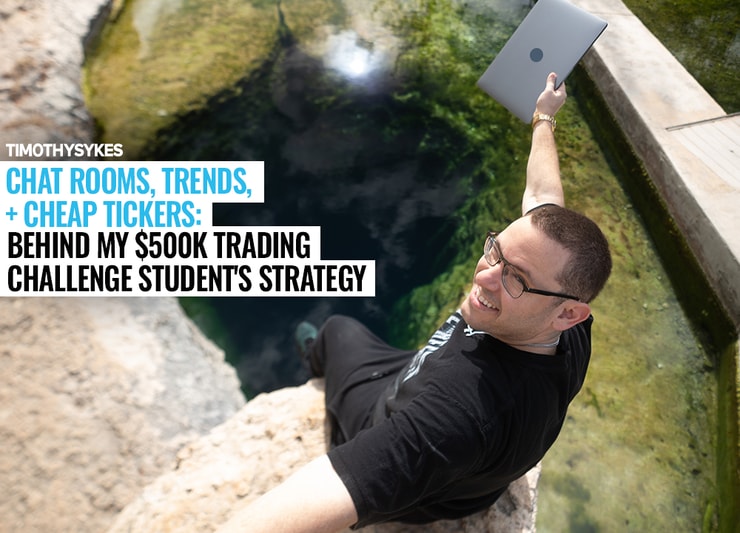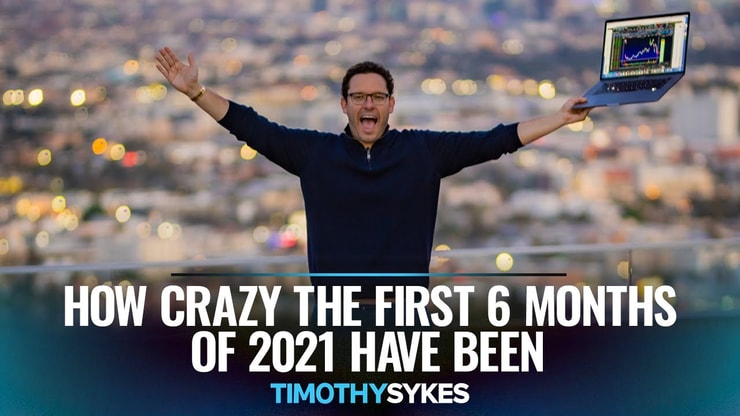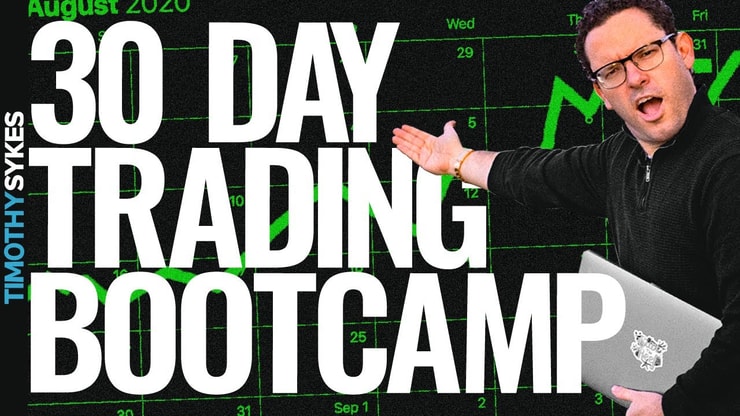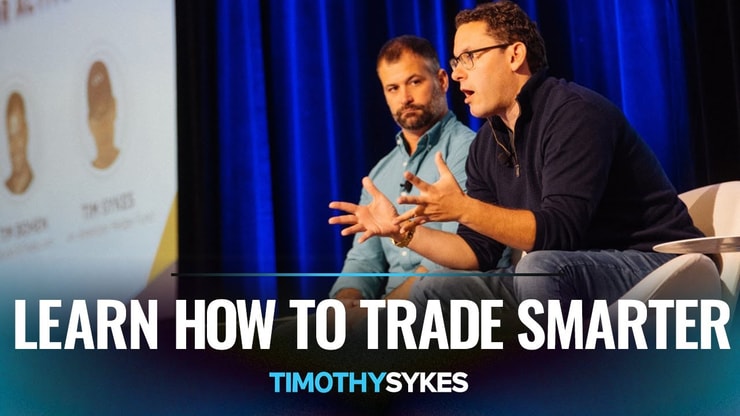I’ve got a student who recently passed a massive trading milestone*…
But I can’t tell you who he is … I can only reveal his Profit.ly alter ego.
I wish I could. He’s kind of a big deal. Some of you might even be fans.
He’s got a big social media presence for something that has nothing to do with trading. To keep his different pursuits separate he prefers to stay anonymous.
This busy entrepreneur-turned-trader recently passed the $500,000 profit mark. As of mid-July 2021, he’s over $503,000 in trading profits.*
He’s actually been following me for years, but only got serious about trading in the past year or so. He was just accepted to my Trading Challenge in early 2021. It’s been quite a year for him so far…
Read on to learn all about his story and unique trading strategy.
Note: Curious how 2021’s been treating me and my trading? Check out my latest video featuring a mid-year recap:
Table of Contents
A Long and Winding Trading Road…
My $500,000 mystery student* discovered me in 2013.
At the time, he’d just aggressively paid off his student loans. He had some money and was interested in pursuing new opportunities.
And he had a little money to start trading … But not enough money for my Trading Challenge.
So he started where he could. He signed up for TimAlerts and learned from my videos.
Too bad my 30-Day Bootcamp wasn’t available then … Ever since it was released in 2020, it’s been a gateway for traders interested in my Trading Challenge.
Featuring lessons from me, my top student Matthew Monaco, and guest appearances from traders like StocksToTrade’s** Tim Bohen, It’s a great way to learn the basics of trading at your own pace…
My mystery student was pursuing more than just trading at that time.
Along with a partner, he was working on developing a business. For the next several years, his trading career mostly involved learning and dabbling since his attention was mainly on building his company.
As a trader, he made a ton of mistakes. He admits that he didn’t do extremely well.
But in retrospect, this was actually a good thing.
For one, it helped him recognize that trading isn’t as easy as some fake gurus would have you believe. He also believes those initial losses are par for the course “when you’re conditioning yourself to be a lifetime trader.”
I love that he instinctively picked up on what I call the ‘athlete mindset’ — I wish more traders understood this!
According to my mystery student, trading is a lot like working out…
“You’re not going to be a bodybuilder in a year. Maybe not even five years. You need to keep doing it. As you train as a trader, you get little scars. They heal and teach you to be a better trader and how to handle the markets with less emotion.”
Changing Lanes: Getting Real About Trading Education
Several years down the road, by the end of 2020, my mystery student was doing pretty well in life.
The business he’d started had grown. He was established. And he had more money and decided it was time to get serious about trading.
But he recognized that he needed guidance on how to trade penny stocks. “I’d learned as much as I could on my own. I needed some structure.”
So in early 2021, he applied for my Trading Challenge. He was accepted — and he started studying hard right away.
YOU SHOULD STUDY HARD EVERY SINGLE DAY, EVERY SINGLE NIGHT NO MATTER IF IT'S THE WEEKEND AS LONG AS YOU HAVE AIR IN YOUR LUNGS, STUDY, STUDY, STUDY & YOU'LL BE SHOCKED AT WHAT YOU WILL LEARN/ACCOMPLISH OVER TIME. GIVE IT A FEW YEARS & THANK ME LATER! #NODAYSOFF #HOWBADDOYOUWANTIT
— Timothy Sykes (@timothysykes) October 10, 2020
This student was obsessive about following my lessons and the Trading Challenge chat room. He’d even go to bed with his AirPods in, listening to my lessons and picking up trading lingo…
And he took the time to get more familiar with trading software and doing his own stock screening.
Because he has a very busy schedule, he had to devise his own system of finding stocks and doing research. He relies on alerts he sets and sets aside full days every now and again to get through his watchlist and wait for his patterns.
His Favorite Trading Challenge Resources
My mystery student tells me he gained a lot of knowledge through my DVDs, webinars, alerts, and frequent lessons.
But one of the biggest resources that he’s using on a daily basis is the Trading Challenge chat room.
“It’s direct in code,” he says. He’s referring to the fact that it can be easier to pick up on trends by just watching the most discussed tickers. When he starts to see trader after trader mentioning the same ticker, it gives him a clue that it might be worth researching…
The Importance of Developing Your Own Strategy
Early on in his Trading Challenge days, my mystery student recognized that trading wasn’t just a matter of following my trades — or anyone else’s.
As he says, “You can’t just copy people. You need to find what is comfortable for you.”
I wish more students understood that…
My mystery student wanted self-sufficiency. His approach was to listen to what people like me and my top students had to say — then see if he could spin it in a way that worked for him.
Studying the past, learning from the present, becoming self-sufficient & acquiring A TON of knowledge/expertise is what's needed for the most success over time, NOT relying on ANYONE else's picks. All that does is make you dependent & usually brainwashed if you trade penny stocks
— Timothy Sykes (@timothysykes) February 18, 2021
A Different Spin on My Strategy
My mystery student has adapted my teachings in some pretty interesting ways.
He shares that his biggest gains* have resulted from taking “heavy positions right before a catalyst.”
To find stocks, he relies on “a broad spectrum of resources” — social media, trading platforms, and chat rooms.
He does his own research, but he looks to the crowd to get a sense of the trend and hype. And he spends a lot of time in the Trading Challenge chat room.
When he sees a lot of people discussing something but it hasn’t yet moved, he knows that there could be a big move on the horizon. There’s hype, and that attracts traders. It doesn’t really matter if there’s a good reason or not.
Using this strategy, he started to find success with speculative hype pharmaceutical plays like Ocugen Inc (NASDAQ: OCGN). Most notably he had a $13,094 profit trade, but he also had several other trades on it, including this $6,794 profit trade.*
Diversify Your Strategy

My mystery student doesn’t like to put all his eggs in one basket. “You don’t want to rely on the same strategy with everything you’re doing,” he tells me.
All the same, he doesn’t follow a million different strategies — he sticks to just a few that work for him.
Another strategy that worked for him in 2020 was capitalizing on the market crash in March. He bought up a lot of stocks that he thought would rebound — like cruise lines.
He wasn’t 100% sure that it would happen that way. But he figured that within a year and a half that things would bounce back, especially with big companies that he knew could afford to bleed out for a while.
For instance, everyone said AMC Entertainment Holdings Inc. (NYSE: AMC) was going to fail. Then it spiked huge and recently spiked again.
In fact, the more recent spike helped push my student Brock over the million-dollar profit mark*…
Understand @beerock42 was close to $1 million 2 weeks ago, but got too cocky…today the $AMC volatility helped push him over. ALL you need is the right mindset, strategy, dedication & persistence…who's going to be my next https://t.co/occ8wKmlgm student to pass $1 million?!?! pic.twitter.com/HveTIAHgEY
— Timothy Sykes (@timothysykes) June 3, 2021
Hold, But Don’t Hope: Investing in “Ghost Stocks”
Yep. I said invest. I’m a trader — not an investor. So it’s not a word you see around here a lot when it comes to stocks…
But my mystery student has an interesting approach to investing in penny stocks.
In the past, he’s put a ton of stocks on his radar — then waits for people to lose interest in them.
Eventually, they’d hit a rock-bottom point where nobody cared about them. My mystery student describes them as “ghost stocks.”
At that point, he’ll look at the chart and look at the low compared to its timespan.
He might put money into five to 10 of these ghost stocks — within a few months, they have the potential to go up exponentially.
With this approach, he attempts to capitalize on the idea that past runners tend to run again.
But while he’s holding, he’s not necessarily hoping. He sees these stocks for what they are.
If there’s just one runner in the mix, the potential profits can carry the other stocks that do nothing. And since he already bought on the downside, there isn’t much more downside that they can experience.
He isn’t risking much on each, so he doesn’t care if they all go to zero.
All the same, he realizes that this approach may not work in all markets. He also admits that even though he doesn’t necessarily believe in these stocks, “There are mistakes that have cost me based on stubbornness or that fruitful hope of ‘what if’.”
That’s why one of his goals is to get more into day trading…
Continuing to Adapt and Grow

Right now, one of my mystery student’s goals is to channel more of my sniper-like approach to penny stocks.
He says that he likes my strategy because it’s in and out — you’re never really in the market. His analogy? “It’s like you’re reaching into a waterfall and grabbing money.”
But fast-paced day trading requires a lot of discipline. Traders must do their due diligence. They must have the stocks on their radar. And they’re smart to stay in tune with a trading community where people watch what’s hot.
It also requires the ability to get out of a trade fast if necessary. Cutting losses quickly is vital.
This is a challenge for my mystery student because he’s gotten accustomed to trading big positions and moving a lot of volume.
But he’s motivated to keep adapting. He wants to have more liquidity so that he can be more nimble when he sees hot plays come along.
Tips for Newbies
According to my mystery student, new traders should focus on learning — not making money.
Mistakes are inevitable. It’s a trader’s responsibility to make sure that mistakes are impactful enough to learn from, but not impactful enough to ruin you.
He says, “Only trade disposable income. If you’re trading money that you might need it will really play with your emotions.
“If you’re looking at your positions too much, you put in too much. Put in an amount that doesn’t affect you emotionally.”
No, you won’t make a lot of money this way — but it can reduce FOMO. When traders jump in because of FOMO, they’re already behind the curve.
As my mystery student says, “The market is a huge emotional test against yourself and what you’re willing to risk.”
Newbies always have FOMO when they take profits or cut losses too quickly as to what could've been an hour/a day later while veterans know it's part of the game, I don't mind selling too soon or cutting losses before a big bounce because that just means I was on the right track!
— Timothy Sykes (@timothysykes) June 18, 2020
Are You Ready to Take Your Next Step?
My $500,000 mystery student* has had an epic trading journey.
He spent over seven years dabbling in the stock market without much guidance before he decided to get serious about his education.
Once he joined my Trading Challenge, he was prepared to take his studies seriously. He dedicated himself to the process, and now he’s enjoying some incredible results. Just check out his profit chart.*
Results like this aren’t common. Every trader’s journey will be different. But there are a ton of lessons you can learn from this mystery student’s journey. Like how losses can be your best teachers, why it’s critical to develop your own strategy, and why it’s crucial to adapt to survive in the market.
Are you ready to get serious about your trading career? Consider applying for my Trading Challenge.
How does my mystery student’s work ethic inspire you? Which of his strategies do you like best? Leave a comment … I love hearing from you!
Disclaimers
*Please note that any reported trading results are not typical and do not reflect the experience of the majority of individuals using our products. From January 1, 2020, to December 31, 2020, typical users of the products and services offered by this website reported earning, on average, an estimated $49.91 in profit.
It takes years of dedication, hard work, and discipline to learn how to trade. Individual results will vary. Trading is inherently risky. Before making any trades, remember to do your due diligence and never risk more than you can afford to lose.
Note: Tim has also hired Matthew Monaco to assist with his trading education business.
**Tim Sykes has a minority ownership stake in StockstoTrade.com.






Leave a reply